AIt is necessary for political parties to win elections. In the case of Karnataka, this is perhaps more true than elsewhere. For the BJP, it has been its southern outpost. Losing would be a disaster when she is spending huge political capital trying to establish herself in Kerala, Telangana and Tamil Nadu. For the Congress too, their only hope in the south, anything less than an outright victory could see the party split and perhaps disappear like elsewhere. And for the Gowda-led JDS, he must remain the kingmaker, maintain the balance of power, or risk becoming irrelevant.
The opinion polls so far are pointing towards the victory of the Congress. From a narrow majority to an overwhelming majority, where it could get 150 seats in the 224-member house. The BJP seems to be burdened by corruption (40 per cent CMs), internal dissension and defections. But even in April 2018, the winds of BJP’s downfall were blowing, yet a massive Modi onslaught in early May helped turn the game and emerge as the single largest party with 104 seats. The table below shows how much the BJP benefited during the election campaign. Now Modi’s dhamachowki has started once again.
straight fight and narrow margin
The BJP begins with some basic advantages. First, it has more seats with a larger majority to defend, and in a direct contest with the Congress, it wins 63 percent of the seats (see table on straight fights, below). Also, the fact remains that the BJP has done better than the Congress in 35 seats that have had smaller margins in the last three elections. BJP Drive In the old Mysore region, especially in infrastructure, the family-run JDS could help bring down the numbers.
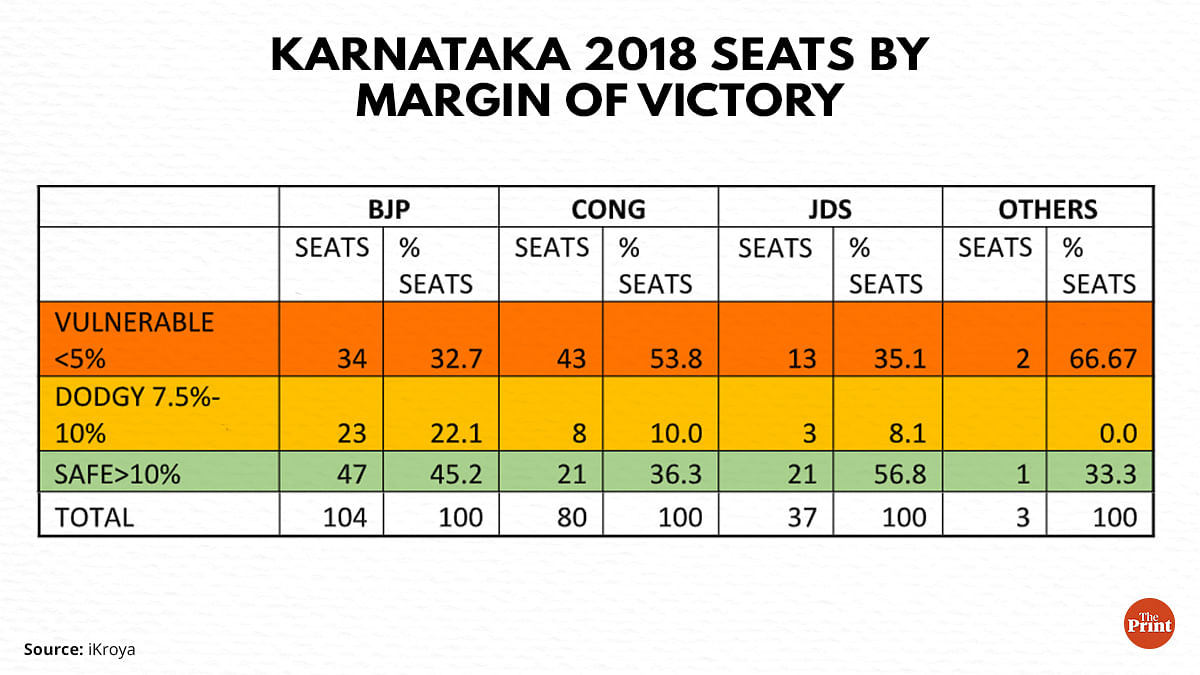
In Karnataka, 41 per cent seats can be termed as unsafe – with a margin of less than 7.5 per cent. There can be a fluctuation of less than four per cent on these seats.
The Congress has the largest number of these ‘weak’ seats, 43 of them, or more than half of them. The BJP has a ‘safe’ bank of 47 seats. It really needs to capture seats if it has to stay in power. That said, if the opinion polls are correct, and a five percent swing for the Congress comes to fruition, the BJP could lose up to 57 seats and push the Congress to over 130 seats.
In 2018, there was a direct contest on about 60 per cent seats in Karnataka.
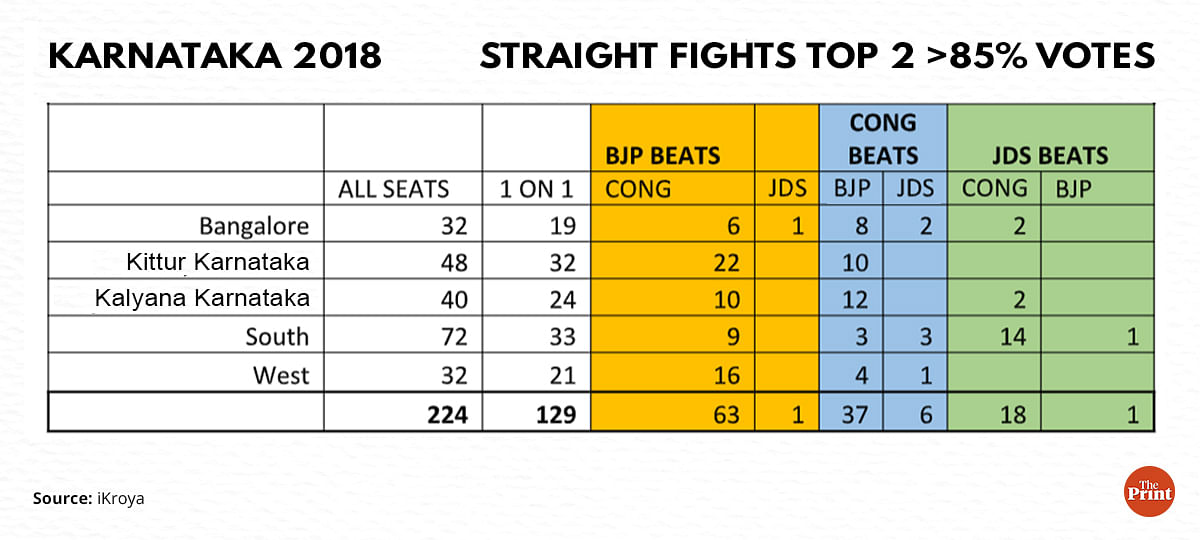
Here again the BJP showed its strength by winning nearly 50 percent, while the Congress was bled to death by both the BJP and the JDS. However, the Congress is expected to take more than 30 seats if it has a reasonable tilt in its favour, say three to four per cent.
Of the 92 ‘weak’ seats, 74 are in the regions of Kittur Karnataka (earlier Bombay Karnataka), Kalyana Karnataka (earlier Hyderabad Karnataka) and Dakshin (including old Mysore). The former two of these should worry the BJP.
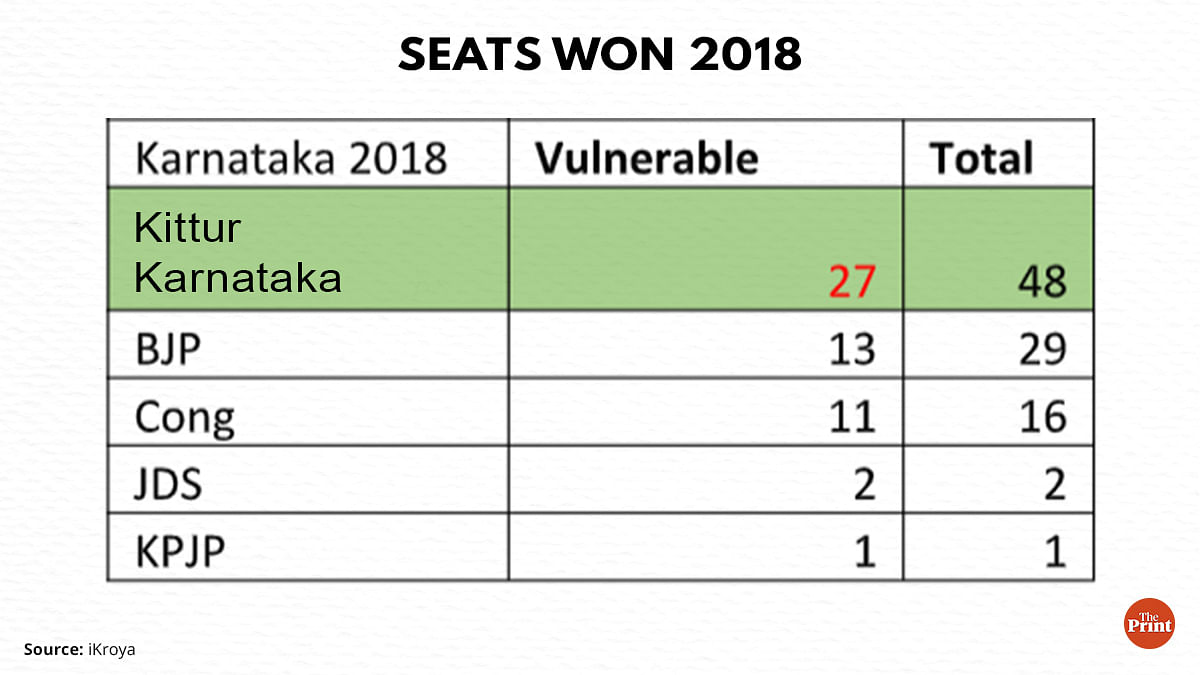
Kittur Karnataka is a Lingayat bastion of the BJP. Former CM Jagadish Shettar, who switched from BJP to Congress, is an influential leader in the region. He Claim That his switch could cost the BJP 25 seats. The BJP has at least 13 seats in the high-risk zone here, even if a small percentage of voters switch parties, which could almost halve their total. And there is a direct contest with the Congress on 66 per cent seats, Shettar’s defection can tell.
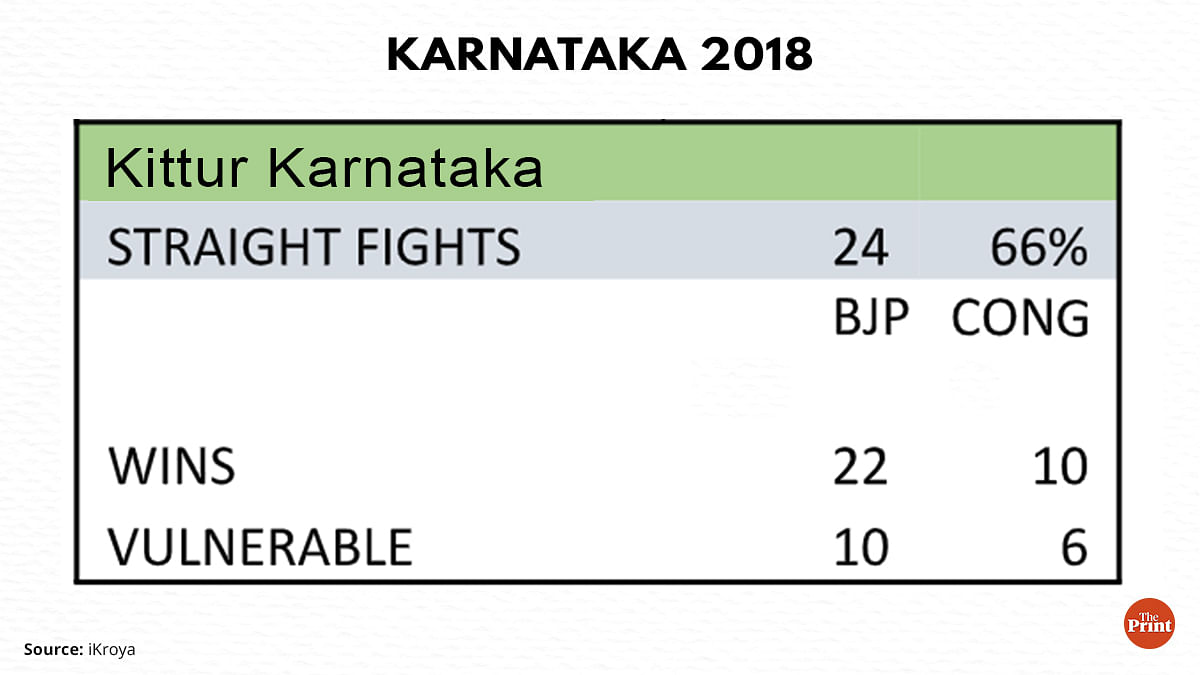
Similarly, the BJP is sitting on an uneasy wicket in Kalyana Karnataka. The Congress retained most of the gains made in the region in 2013. This is despite the fact that former chief minister BS Yediyurappa, who quit the BJP in 2012 and split BJP votes in 2013, returned in the next assembly election.
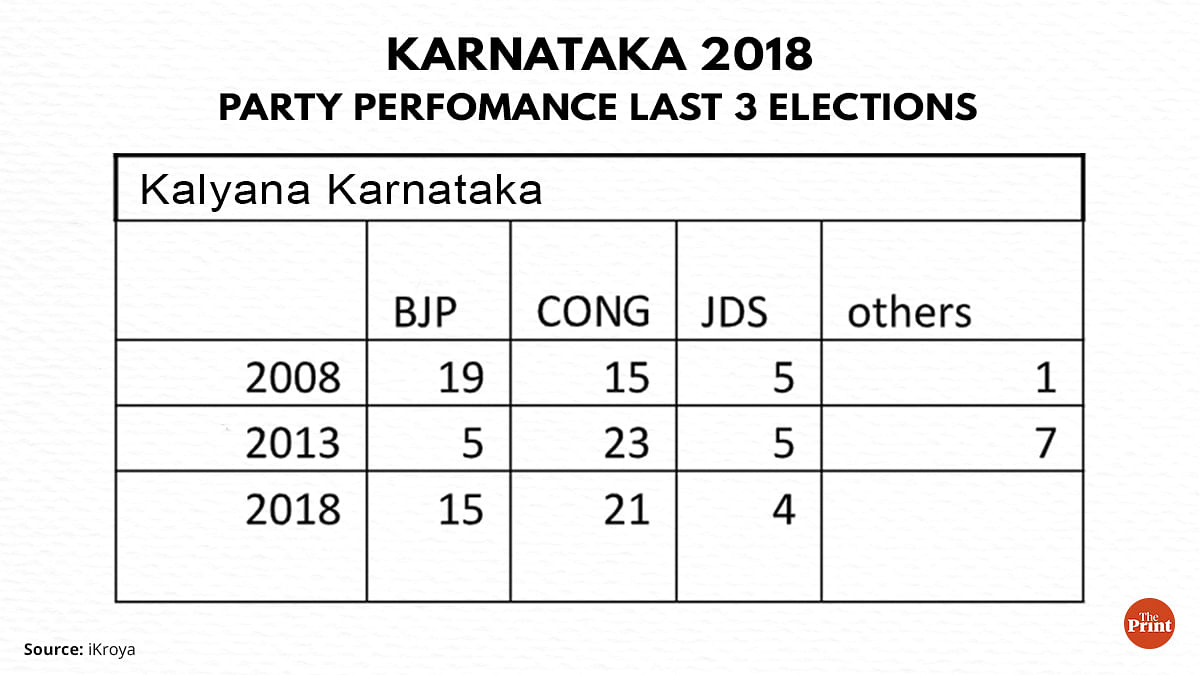
The Congress has a slim majority of more than half the seats, but they are probably confident of retaining it like in 2018. Especially now when the mood seems to be against the BJP. There was a direct contest on 13 of the 19 sensitive seats in the zone. If he remains like this then Congress can be benefited.
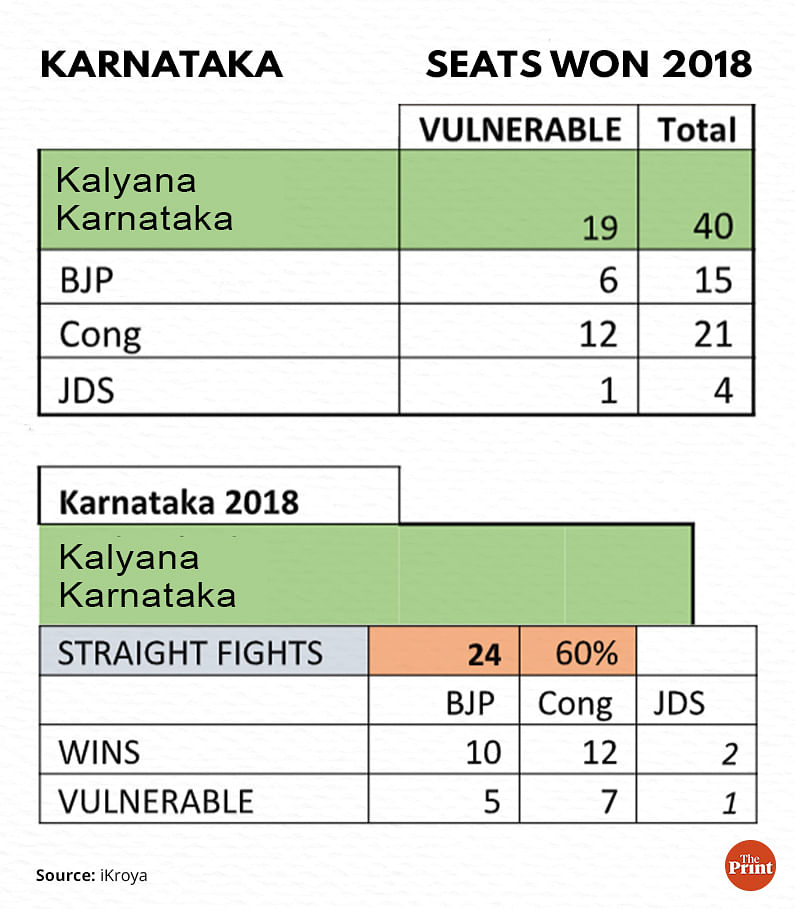
biggest battlefield
The biggest battleground in Karnataka is the South with 72 seats. The region is home to Old Mysuru, which is a JDS stronghold because of its large Vokkaliga population. The performance here has made it the kingmaker of Karnataka. And even though it got a bloody nose in the 2019 Lok Sabha polls, local issues and loyalties are expected to play a key role in the assembly polls.
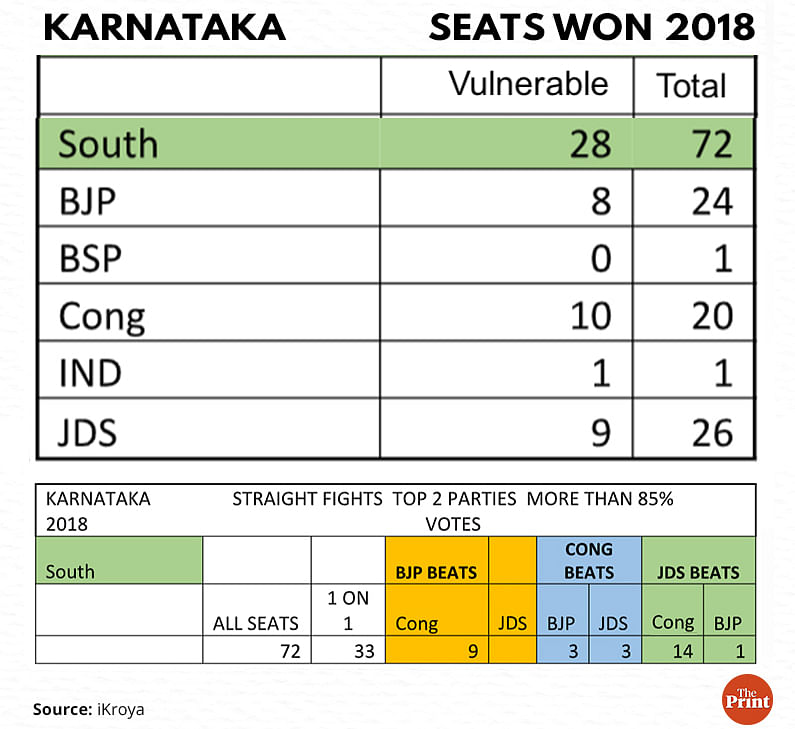
Congress once again lost to both BJP and JDS in a direct contest. His strength was in winning three or more corner fights.
This time it could be an advantage as the BJP is making a strong push in the region by investing a lot in infrastructure – the Bengaluru-Mysore highway and the Vande Bharat Express. He believes this development of the double engine will resonate with the electorate. The BJP is hoping to make inroads here as both the Congress and the JDS hold a large number of vulnerable seats (19 between them).
The question is, from whom is the BJP likely to get votes? If it is from JDS then Congress can get a big advantage. And with both its chief ministerial candidates – Siddaramaiah and DK Shivakumar – from the region, the Congress needs to do better than ever to get a workable majority in the region.
Finally, in a close fight, everything could come down to 35 seats, which has been a margin of less than 10 per cent in the last three assembly elections. Here BJP is looking a bit weak, 17 seats are at stake.

Not only the margin is less but the seats are highly volatile. Only six seats have been won consecutively by a single party in three elections and since the BJP holds the largest number of these seats, it is perhaps at the greatest risk of losing them. His retention record is very poor.

With Union Home Minister Amit Shah Shortage BJP’s target from 150+ to 130, BJP clearly knows that things are not as good as they want. The fact that no party has won consecutive elections over the past 35 years also suggests that change is possible.
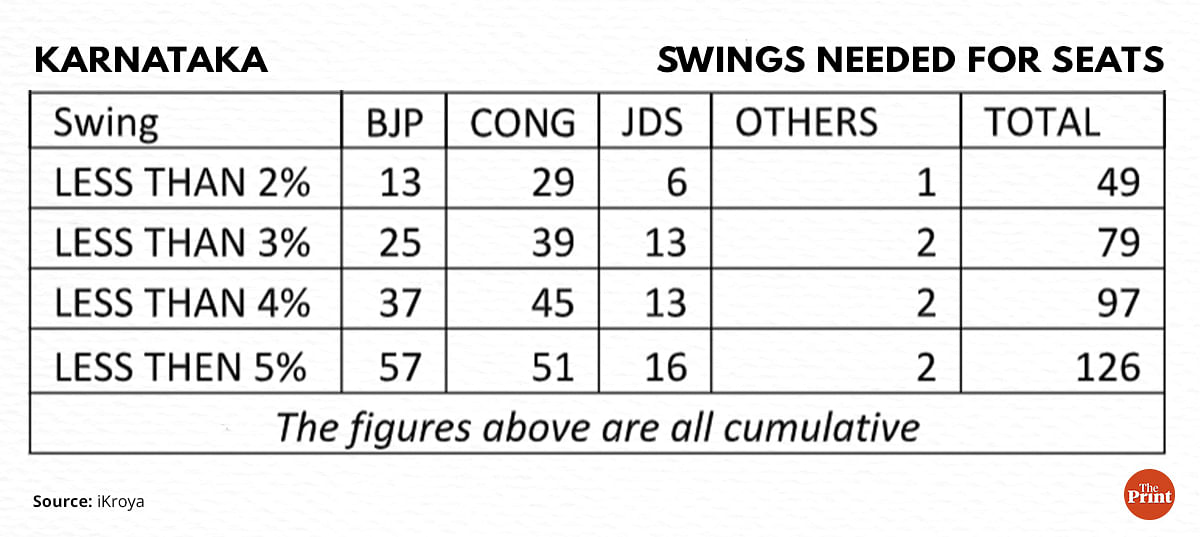
And yet for the Congress to manage an improbable victory, it would need a massive swing in its favor of more than 5 per cent to achieve the target of over 130.
Anything less will leave a hung house. This will open the way for horse-trading for the BJP. Of course, a very small tilt in favor of the BJP could give them a majority.
All data is sourced from iKroya; Special thanks to Namrata Gupta and Eram Durrani for facilitating this. All errors in analysis are mine.
Ishwari Bajpai is a journalist. He was Senior Editorial Consultant of NDTV from 1996-2018 and has been involved in television election coverage since 1984. He tweets @onlybaj.
(Editing by Therese Sudip)